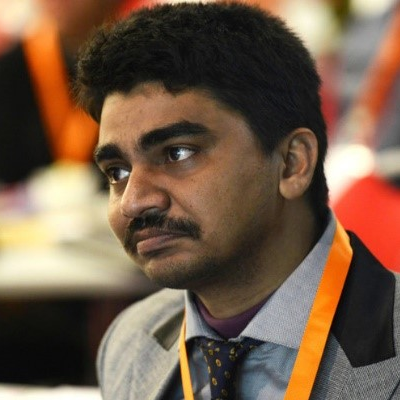Entropy Based Image Registration
A special issue of Entropy (ISSN 1099-4300). This special issue belongs to the section "Multidisciplinary Applications".
Deadline for manuscript submissions: closed (15 February 2022) | Viewed by 7663
Special Issue Editors
Interests: medical image analysis;artificial intelligence;image registration
Interests: image processing; AI; healthcare
Special Issues, Collections and Topics in MDPI journals
Interests: medical image reconstruction/analysis; computational methods in medical imaging; medical image processing and segmentation; computer aided detection/diagnosis; medical image construction techniques and imaging in diagnostic radiology/echography; artificial intelligence
Special Issues, Collections and Topics in MDPI journals
Special Issue Information
Dear Colleagues,
The concept of entropy indicates the degree of irregularity or uncertainty in a system. Usually, there are two concepts: entropy and information. Entropy represents the uncertainty, which means one is unconfident about the occurrence of a process. An increase in the uncertainty of a system will reduce the entropy of that system. Information represents the difference between the maximum and the actual value of entropy of a system. The analysis of medical images requires, among many others, statistical methods to achieve certain relationship between two or more images. The analysis of this relationship usually becomes manageable once a correspondence is set up between the images by means of image registration. A universal image registration solution is not possible but various techniques can be tailored for particular applications such as images acquired by MRI, US, CT, PET or retinal images. Both multi-modal image registration and multisubject image registration are difficult, but different stochastic models of the registration problem yield different entropic measures/entropy estimators to quantify the quality of image registration.
This Special Issue collects recent results drawn from research areas of medical imaging and image processing, such as parametric and nonparametric entropy estimation problem from the perspective of image registration, Rényi entropy-based image registration, level set entropy for nonrigid registration, and entropy-based registration algorithm. Contributions addressing any of these issues are very welcome.
Aim: to bring together the latest research into entropy based image registration.
Scope: parametric entropy estimation problem for image registration, non-parametric entropy estimation problem for image registration, Rényi entropy-based image registration, level set entropy for non-rigid registration, entropy-based registration algorithm, entropic graphs for registration.
Prof. Luminita Moraru
Dr. Nilanjan Dey
Dr. Simona Moldovanu
Guest Editors
Manuscript Submission Information
Manuscripts should be submitted online at www.mdpi.com by registering and logging in to this website. Once you are registered, click here to go to the submission form. Manuscripts can be submitted until the deadline. All submissions that pass pre-check are peer-reviewed. Accepted papers will be published continuously in the journal (as soon as accepted) and will be listed together on the special issue website. Research articles, review articles as well as short communications are invited. For planned papers, a title and short abstract (about 100 words) can be sent to the Editorial Office for announcement on this website.
Submitted manuscripts should not have been published previously, nor be under consideration for publication elsewhere (except conference proceedings papers). All manuscripts are thoroughly refereed through a single-blind peer-review process. A guide for authors and other relevant information for submission of manuscripts is available on the Instructions for Authors page. Entropy is an international peer-reviewed open access monthly journal published by MDPI.
Please visit the Instructions for Authors page before submitting a manuscript. The Article Processing Charge (APC) for publication in this open access journal is 2600 CHF (Swiss Francs). Submitted papers should be well formatted and use good English. Authors may use MDPI's English editing service prior to publication or during author revisions.
Keywords
- Rényi entropy-based image registration
- Non-rigid registration
- Parametric and non-parametric entropy estimation problem for image registration








